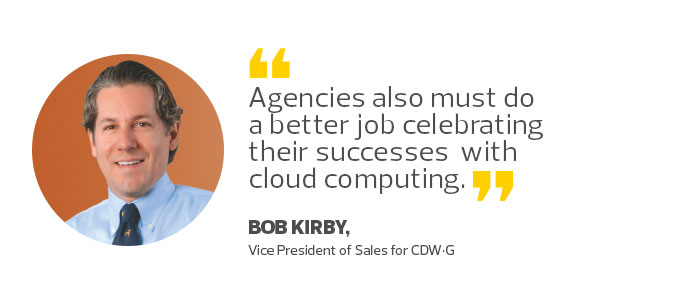How Feds Should Talk About the Cloud
Too often in Washington, messaging is all that matters. With that philosophy comes a common problem. Messaging often is mistaken for communication.
The bumper sticker-ization of everything has led to talking points, finely crafted slide decks and carefully chosen statistics. In an era of time-starved attention spans, the message is compressed, compact and easy to understand.
But make no mistake. This is not communication.
Communication entails a well-thought-out back-and-forth with substance and a genuine understanding between parties. For agencies facing IT modernization and weighing the cloud, messaging will not suffice. There must be true communication, a deeper relationship between parties and thorough comprehension of what each side needs.
Since the days of the first federal CIO, Vivek Kundra, in 2009 and the Obama administration’s push to the cloud, the bumper-sticker language for federal IT has been clear and unforgettable: Cloud First.
Today, communication requires a clear explanation of what problems agencies are trying to solve, the scope of possible solutions they’re willing to consider, and a list of prioritized capabilities.
Agencies also must do better celebrating their successes with the cloud.
Nearly seven years after “Cloud First” became a mantra, many federal leaders cannot quantify its victories.
Communicate the Real-World Benefits of Cloud
A November 2016 survey by Deloitte of federal employees in senior positions found more than 70 percent of respondents said they did not know if the cloud had an impact at their agency or said that it had no impact.
This proves that the story of the cloud must be told in new ways. IT professionals need to talk openly and honestly about the issues feds care about most: data security concerns, modernization funding and changing the IT culture of agencies where some prefer the status quo. Those subjects will go a long way in helping to assuage concerns, and they will help bridge the gap between cloud myths and reality.

However, digital modernization proponents cannot forget to show, in concrete terms, the return on investment of this transformation. Cloud advocates must explain how users’ day-to-day tasks are made easier. They must describe the savings in a way that resonates in the C-suite and in cubicle farms. No constituent can be taken for granted.
An October 2016 report by ACT-IAC pointed to the Federal Communication Commission’s use of the cloud for its consumer help desk. That project reduced software and on-premises hardware costs from $640,000 to $100,000.
Change Users' Minds on Cloud
When the Army moved its Total Ammunition Management Information System to a cloud application, some tasks that once took three weeks were now complete in three hours. These are the types of statistics that can change even the most stubborn hearts and minds.
Government and industry must meet and further their communication. Not only will such a dialogue pay dividends for each party, it will ultimately lead to benefits for the most important constituents: citizens and taxpayers.
The Deloitte report concluded — rightfully so — that “innovation is here, and its vehicle is cloud-native.”
Agency leaders know that’s true, but maybe the message is a bit too wordy — at least for a bumper sticker.








